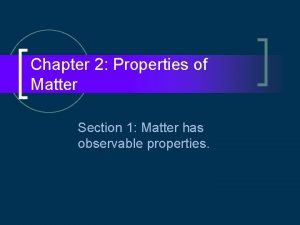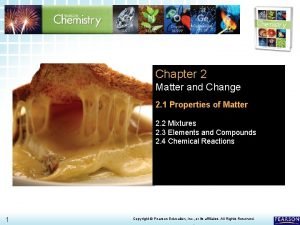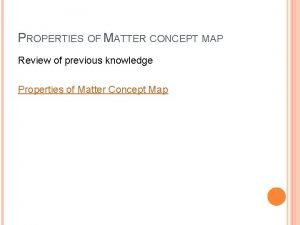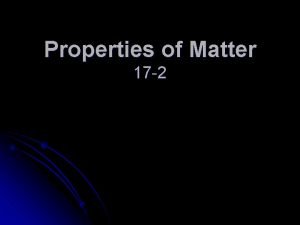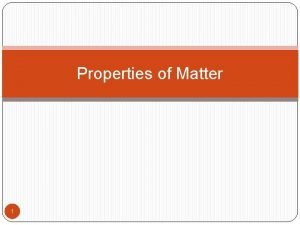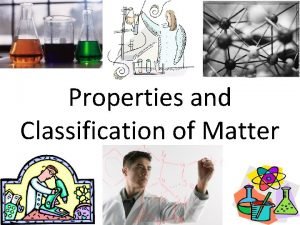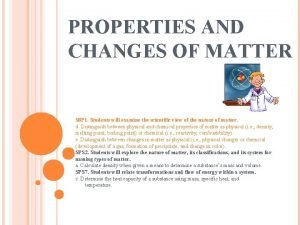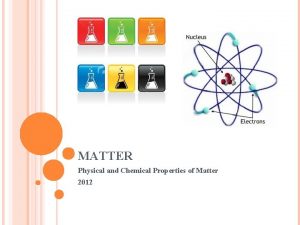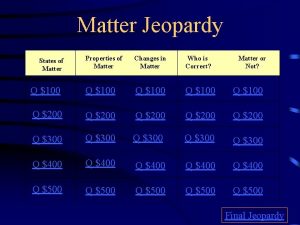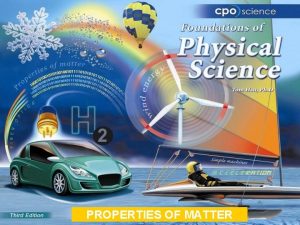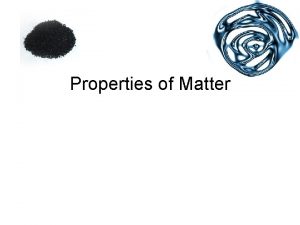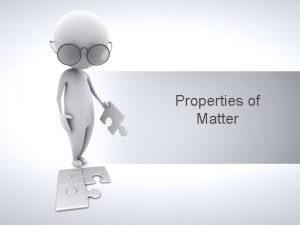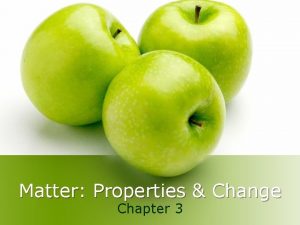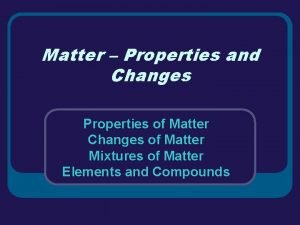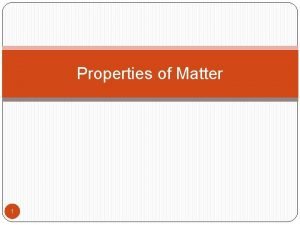Chapter 2 Properties of Matter Section 1 Matter



















- Slides: 19

Chapter 2: Properties of Matter Section 1: Matter has observable properties.

Physical Properties Physical properties of a substance can be observed without changing the identity of the substance. Density, mass, color, size, volume, and texture are examples of physical properties.


Density is the relationship between the mass and the volume of a substance. Density= Mass ÷ Volume


Any change in a physical property of a substance is a physical change. The identity of the material remains the same during the change. Examples of physical changes include cutting a material, breaking it, and changing its state.


Chemical properties describe how substances form new substances. To observe chemical properties in a substance, you must see a chemical change.

To observe the combustibility of a piece of paper, for example, the paper must burn. The products that result from burning the paper differ in identity from the paper itself.

Signs of a chemical change include the production of an odor, a gas, or a solid and a change in temperature or color.

Other examples of chemical properties include reactivity, tendency to corrode, and toxicity.

Shape Color Texture Volume Size

Measuring an object’s mass does not change the substance to another substance. Changing the shape of a substance does not transform the substance itself.

measurement; amount of matter in a given volume g/cm 3, D = m/V

V= l x w x h 3 cm x 4 cm x 5 cm = 60 cm 3. D= m/V D= 480 g/60 cm 3 D= 8 g/cm 3.

wool being transformed into a sweater, stretching a rubberband, breaking a piece of clay in half

When something burns, the substance changes into a new substance, so it is a chemical change.

substances forming other substances used to identify c. properties wood burning; iron rusting change of one into another

Color Change Bubbles Formation Temp Change Light Emission
 Chapter 2 section 1 classifying matter answers
Chapter 2 section 1 classifying matter answers Properties of matter section 2
Properties of matter section 2 Classification of matter section 1 composition of matter
Classification of matter section 1 composition of matter Composition of matter section 1
Composition of matter section 1 Section 1 composition of matter
Section 1 composition of matter Chapter 2 properties of matter answer key
Chapter 2 properties of matter answer key Chapter 10 review states of matter section 4
Chapter 10 review states of matter section 4 Principles of ecology section 3 cycling of matter
Principles of ecology section 3 cycling of matter Chapter 10 section 1 meiosis worksheet answer key
Chapter 10 section 1 meiosis worksheet answer key Intensive vs extensive properties
Intensive vs extensive properties Chemical property definition
Chemical property definition What are the 3 properties of a liquid
What are the 3 properties of a liquid Properties of matter vocabulary
Properties of matter vocabulary Concept map about matter
Concept map about matter Objectives of properties of matter
Objectives of properties of matter Common properties of matter
Common properties of matter Classification and properties of matter
Classification and properties of matter Properties and changes of matter worksheet
Properties and changes of matter worksheet Is odor observable or measurable
Is odor observable or measurable Properties of matter jeopardy
Properties of matter jeopardy

